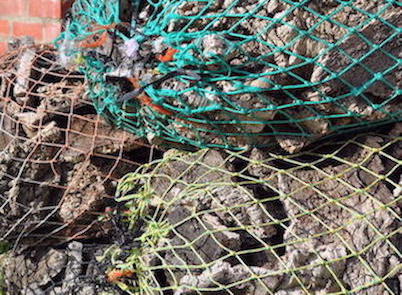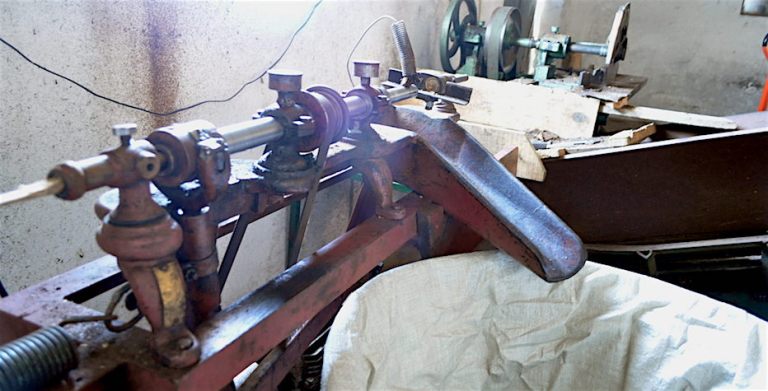It’s not just the lovely golden or ruby liquid that you swill in your stemmed glass that took a long way to get there. That small stopper that came with your favourite bottle did too. Much longer, in most cases.
It all begins with a tree, and not just any tree. It has to come from a mature cork oak that is at least 50 years old. And why a cork oak especially? Because the tree produces Suberin, a waxy substance which adds to the versatility and functionality of the cork. These are qualities which allow cork to resist rotting caused by moisture, mildew, mold, and insect infestation. Perfect for storing and maturing anything of value — such as that highly regarded drink, wine.


Cork oak can live for several hundreds of years, and can be commercially harvested for about 200 years. They can grow to an impressive size such as these oaks which we chanced upon on a hiking trip in the plains of Alentejo, in the south of Portugal (the country produces more than half of the world’s cork.) The cork as we know it comes from the bark of the tree when it has reached a certain thickness after which it is stripped every 7 years. The bare trunk is then marked with the year it was stripped.
How I happened to learn more about the process of transforming these barks into wine stoppers is a small story by itself. While I was walking along the quiet streets of the picturesque village of Viana do Alentejo and stopping a moment to admire an abandoned mill, a lady beckoned. She began to tell me the story of the mill, and said she owned the property across the street. Pointing to the looming structure, she said it was the family-owned old olive press facility and behind it, the small cork processing factory both still operating, and would I like to see them? She bet that I did.
We entered the property where on one side stood a pile of thick cork bark which were neatly stacked. They were left there to cure from between a few weeks up to 6 months. On the other side gathered in net sacks were leftover pieces of bark that were unsuitable for processing.


We continued on towards the building where we saw hunks of peeled bark stacked in a cage. This is where the bark which have been dried, end up. The cage would then be dipped into boiling water to soften the material. It will be dipped again, this time into a chemically-treated bath. There was no such process taking place when we were there, but our kind host showed us the the mechanism to heat the chemical bath, which was fired from below.
We moved on to another part of the building where the now chemically-treated planks were stored to dry and cure for several weeks. At this point, the planks have attained an already much flatter and uniform size.

The planks are then graded by quality. Those which are suitable for making into cork stoppers are cut into strips and passed through a machine which punches each strip through. Close to the punching machine we saw containers with thousands of corks, ready to be sorted.

The cork stoppers then go through quality control and categorised accordingly. We were told that the best ones are those which are smooth, without holes or practically unblemished. Natural wine bottle stoppers of this quality fetch a high price. At that time (in 2011) they cost 1 euro each. The lower-grade ones fetch much less. The leftovers are then recycled and made into other products such as flooring and boards, mainly for insulation. This marked the end of our fascinating visit, which our lovely host capped by making us bring a few leftover cork strips as souvenir.

The entire process, which includes several drying and curing stages, easily takes up to a year. Add to that the decades it took for the oak tree to grow and renew its bark. That little corkstop came a long way indeed. (And we’re not counting the time and the distance it took the wine from the vineyard to your glass…)
It’s nice to know that a good wine is kept good in the bottle by something that, like it, has been treated and aged well.
Where in Portugal: Viana do Alentejo, 30 km south of Évora, about 160 km from Lisbon. Accessible by car, and by bus from Évora

A thousand journeys across Portugal by 1000journeys is licensed under a Creative Commons Attribution-NonCommercial-NoDerivatives 4.0 International License.



It seems that 1 Euro for each cork is not enough… just to say… because of the tedious processes and the aging of the trees before it was harvested to make the cork… and then the wasted corks and other barks has to be accounted for too… still, the cork price is a bargain…
Good read… Thanks for that “Cork” information…
LikeLike
Thanks for dropping by. The less than perfect ones are much cheaper, but yes, considering the process, it does seem still a bargain. Many non-European wine producers have started to use alternatives to cork, though, as it ends up cheaper. They’ve started to use synthetic cork, and screw caps.
LikeLike
Wonderful post about cork!
LikeLike
Thank you for stopping by. I have to thank the Alentejano hospitality for the little knowledge of cork (and the pictures) I gained!
LikeLiked by 1 person